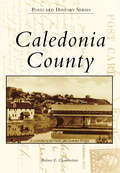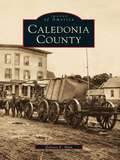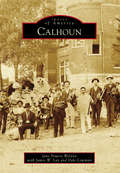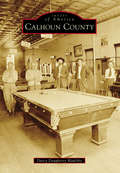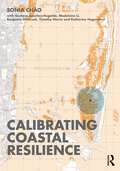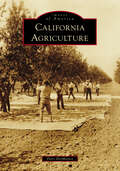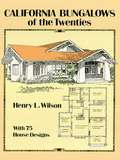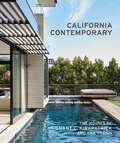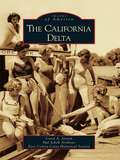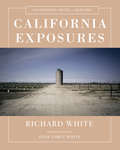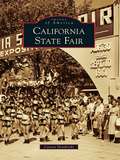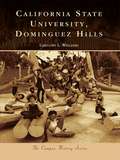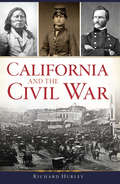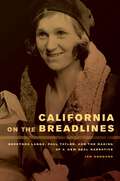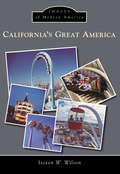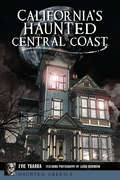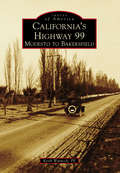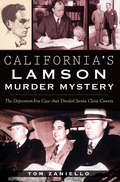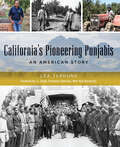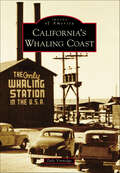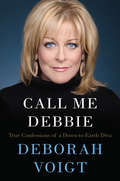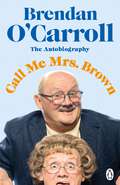- Table View
- List View
Caledonia County
by Dolores E. ChamberlainCaledonia County, located in Vermont's "Northeast Kingdom," comprises 17 towns and villages. Early settlers cleared heavily forested land, and communities slowly took form. Businesses such as mills and factories emerged along the many rivers. Each town and village had many special attributes--Ricker's sawmill in Groton cut timbers until 1965, Peacham provided granite for monuments across the country, and St. Johnsbury manufactured goods like scales and maple syrup. Hardworking and industrious, residents have endured fires, floods, extremely harsh winters, and droughts, and they continue to boast a resilient spirit today.
Caledonia County
by Dolores E. HamAt the top of Vermont is a region known as the Northeast Kingdom. It is composed of three counties, and one of those counties is Caledonia. Images of America: Caledonia County presents the history of this area, taking you back to rural America as it used to be, with its slower pace of life unimpeded by hectic aspects of modern times. Inside Caledonia County are more than 200 stunning scenes from all 17 of the county's towns. Represented in vivid detail are the people and their early agriculture and industry; men working at the Woodbury Granite Quarry; the Victorian parlor of Sheepcote, the mansion owned by Edward Fairbanks; early twentieth-century sports teams, both male and female; St. Johnsbury's Pageant of 1912; and a gigantic boulder that was incorporated into a log cabin as the back wall to the fireplace.
Calhoun (Images of America)
by Dale Lowman James W. Lay Jane Powers WeldonCalhoun, the seat of Gordon County, is situated in the rolling Ridge and Valley geologic region of northwest Georgia. The long valley formed a natural migration pattern that influenced the area's settlement and is a strong economic factor today. Transportation arteries, from rivers to railroads to highways, remain a critical part of the city's development. The Cherokee Indians began the infamous Trail of Tears march near Calhoun. Later, Gen. William T. Sherman almost destroyed the village as he led his troops to the Battle of Atlanta. The region's cotton farmers supplied the early tufted-textile industry that evolved into enormous carpet and floor-covering businesses.
Calhoun County
by Darcy Dougherty MaulsbyView the history of small-town, rural Iowa through the eyes of those who lived it. Images of America: Calhoun County showcases this unique heritage through remarkable glimpses into the past and intriguing stories that bring these images to life. Discover the region's pioneer heritage, the birth of the railroad and prairie towns, and the growth of some of most productive farms in the world. Calhoun County claims two nationally acclaimed authors as native sons, welcomed Babe Ruth in 1940 (but not on the baseball field), and was the target of a bank robbery by Bonnie and Clyde in the 1930s. Calhoun County offers a well-researched pictorial journey designed for native Iowans, transplanted Iowans, and those curious about the evolution of small towns and farms in the Midwest.
Calibrating Coastal Resilience
by Sonia R CháoCalibrating Coastal Resilience presents a conceptual reimagining of place in the era of climate change. The urban terroir framework introduced by the authors offers a holistic, data-driven approach to assessing vulnerabilities in the built environment and in designing cities. Inspired by the hyperlocal relationships between humans, cultural traditions, and urban and natural contexts, the authors develop a place-based, historically sympathetic methodology for guiding climate-related urban policies, designs, and actions in coastal areas. Coastal communities have been among the first to experience the devastating consequences of the climate crisis. Using case studies from South Florida, the book illustrates the unique climate risks for this region, including flooding, hurricane, and sea-level rise scenarios, with a focus on the preservation of historic neighborhoods and buildings and reinforcement of built structures.Drawing from the authors’ extensive experience in community planning and historic preservation in cities severely affected by the impacts of climate change, this book introduces practical methods for identifying and aligning preservation goals with resilience needs, including a novel and comprehensive methodology that combines their Storm Surge Building Vulnerability (SSVB) additive model with a Synoptic Survey digital method and associated proticols, and a cultural asset benchmarking system that intersects resilience and preservation objectives. Refined through real-life application and the experience of Southeast Florida preparing for and responding to climate change, these techniques are highly specialized yet designed for ease of implementation.A valuable resource for professionals and students of architecture, urban planning, historic preservation, and local governments globally, Calibrating Coastal Resilience offers communities clear guidelines and actionable steps toward creating place-based resilience planning strategies to safeguard the natural and built landscapes of their region.
California Agriculture (Images of America)
by Patricia Marie DesMaraisBeginning with the Spanish padres in 1769 and reaching its apex in the 1950s, California's rise to a global leader in agriculture rested on a series of converging events. California's population exploded during the Gold Rush, and many who chose to stay found their gold in California's sunshine, fertile soil, and optimal growing climate. Initially, those settlers grew staples such as grain, but by the early 1900s, due to innovations in irrigation, transportation, mechanization, and food processing, California rose to the nation's top grower and shipper of fresh produce. California currently grows over two thirds of America's fruits and nuts and over one third of its vegetables, and each fruit, vegetable, nut, and grain has its own unique backstory. California's crop history is full of the risk-taking and determination of pioneers, immigrants, and entrepreneurs. California also deserves credit for many modern marketing and advertising methods, and the preponderance of food "capitals of the world" is a nostalgic feature of California culture. Patti DesMarais has lived in six California cities. She has a bachelor of arts degree in television and film production from San Diego State University and a master of arts in humanities from California State University, Dominguez Hills. She collects vintage crate labels and has picked lemons, oranges, grapefruits, peaches, and avocados from her own California backyards.
California Bungalows of the Twenties
by Henry L. WilsonReprint of rare catalog includes front or front-angled elevations, floor plans and interior sketches for dozens of authentic bungalow designs, many unique to the California landscape. Detailed descriptions point out special features and possibilities of each design, and include estimates of costs. 231 black-and-white illustrations.
California Contemporary: The Houses of Grant C. Kirkpatrick and KAA Design
by Grant KirkpatrickThe stunning houses of Grant Kirkpatrick and his firm, KAA Design, exemplify why so many of us look to Southern California as the pinnacle of sophisticated modern living. Two dozen magnificent custom homes,modern in style, are built of sensuous materials and sited to make the most of nature, views, and sunlight. This collection of visionary residences, shown in gorgeous photographs and colorful drawings, represents the California Dream, by an architect chosen by celebrities including TomHanks and Rita Wilson, Matt Damon, and Julia Louis-Dreyfus, for their personal retreats. Kirkpatrick offers his reflections on these beautiful projectsand the design strategies behind their creation.
California Delta, The
by East Contra Costa Historical Society Carol A. Jensen Hal Schell ArchivesWelcome to the delta--California style! Over 1,000 miles of waterways lure sportsmen, boaters, and outdoor enthusiasts to the largest estuary in the western United States, surpassed nationally only by the Mississippi River Delta. For generations, the promise of lazy summer days has beckoned travelers to cruise the mighty Sacramento and San Joaquin Rivers. Along with vacationers, however, agricultural users and commercial vessels from around the globe share in the California Delta's bounty. Over 23 million Californians rely on the delta watershed for drinking water, and diversions sustain the largest agricultural industry in the nation. The small towns dotting the sloughs from Collinsville to Stockton to Walnut Grove tell of a simpler time, while today's delta faces such challenges as wildlife-habitat restoration, water rights, housing development, and politics. Complicating these issues, aging levees throughout the low-lying region threaten a disaster of national proportions--and with that prospect, the very future of the California Delta.
California Exposures: Envisioning Myth And History
by Richard WhiteA brilliant California history, in word and image, from an award-winning historian and a documentary photographer. “This is the West, sir. When the legend becomes fact, print the legend.” This indelible quote from The Man Who Shot Liberty Valance applies especially well to California, where legend has so thoroughly become fact that it is visible in everyday landscapes. Our foremost historian of the West, Richard White, never content to “print the legend,” collaborates here with his son, a talented photographer, in excavating the layers of legend built into California’s landscapes. Together they expose the bedrock of the past, and the history they uncover is astonishing. Jesse White’s evocative photographs illustrate the sites of Richard’s historical investigations. A vista of Drakes Estero conjures the darkly amusing story of the Drake Navigators Guild and its dubious efforts to establish an Anglo-Saxon heritage for California. The restored Spanish missions of Los Angeles frame another origin story in which California’s native inhabitants, civilized through contact with friars, gift their territories to white settlers. But the history is not so placid. A quiet riverside park in the Tulare Lake Basin belies scenes of horror from when settlers in the 1850s transformed native homelands into American property. Near the lake bed stands a small marker commemorating the Mussel Slough massacre, the culmination of a violent struggle over land titles between local farmers and the Southern Pacific Railroad in the 1870s. Tulare is today a fertile agricultural county, but its population is poor and unhealthy. The California Dream lives elsewhere. The lake itself disappeared when tributary rivers were rerouted to deliver government-subsidized water to big agriculture and cities. But climate change ensures that it will be back—the only question is when.
California Mission Landscapes: Race, Memory, and the Politics of Heritage (Architecture, Landscape and Amer Culture)
by Elizabeth Kryder-Reid&“Nothing defines California and our nation&’s heritage as significantly or emotionally,&” says the California Mission Foundation, &“as do the twenty-one missions that were founded along the coast from San Diego to Sonoma.&” Indeed, the missions collectively represent the state&’s most iconic tourist destinations and are touchstones for interpreting its history. Elementary school students today still make model missions evoking the romanticized versions of the 1930s. Does it occur to them or to the tourists that the missions have a dark history? California Mission Landscapes is an unprecedented and fascinating history of California mission landscapes from colonial outposts to their reinvention as heritage sites through the late nineteenth and twentieth centuries. Illuminating the deeply political nature of this transformation, Elizabeth Kryder-Reid argues that the designed landscapes have long recast the missions from sites of colonial oppression to aestheticized and nostalgia-drenched monasteries. She investigates how such landscapes have been appropriated in social and political power struggles, particularly in the perpetuation of social inequalities across boundaries of gender, race, class, ethnicity, and religion. California Mission Landscapes demonstrates how the gardens planted in mission courtyards over the past 150 years are not merely anachronistic but have become potent ideological spaces. The transformation of these sites of conquest into physical and metaphoric gardens has reinforced the marginalization of indigenous agency and diminished the contemporary consequences of colonialism. And yet, importantly, this book also points to the potential to create very different visitor experiences than these landscapes currently do.Despite the wealth of scholarship on California history, until now no book has explored the mission landscapes as an avenue into understanding the politics of the past, tracing the continuum between the Spanish colonial period, emerging American nationalism, and the contemporary heritage industry.
California State Fair
by Carson HendricksStarting in San Francisco in 1854, the California State Fair and Exposition began as a vehicle to showcase, encourage, and expand California's agricultural industry. It quickly became an attraction for thousands of residents, both local and from across the state. By 1884, it occupied the largest exhibit hall in the United States. Within 100 years, it became the largest fair in the country by adding horse racing, elaborate exhibits from every county in the state and from around the world, thrill rides, top-flight entertainment, and, of course, the best food. The original goal of the fair was met some 50 years ago, as California remains the nation's top producer of agricultural products.
California State University, Dominguez Hills
by Gregory L. WilliamsCelebrating its 50th anniversary in 2010, California State University Dominguez Hills has been a dynamic urban university tasked with educating students who often become the first in their families to attend college. CSU Dominguez Hills is located in Carson, Los Angeles County, and boasts one of the most ethnically diverse enrollments in the United States. Chartered in 1960 as a liberal arts college serving baby boomers in Los Angeles's South Bay region, CSU Dominguez Hills has grown into a university dedicated to personalized learning. After years of wrangling over the college's location, classes began in 1965 in a bank building and the next year moved to Dominguez Hills. By the end of the 1970s, the campus included several thousand students attending classes in 10 architecturally unique buildings. In the 21st century, CSU Dominguez Hills offers 45 undergraduate majors and 24 master's degrees.
California and the Civil War (Civil War Series)
by Richard HurleyIn the long and bitter prelude to war, southern transplants dominated California government, keeping the state aligned with Dixie. However, a murderous duel in 1859 killed “Free Soil” U.S. Senator David C. Broderick, and public opinion began to change. As war broke out back east, a golden-tongued preacher named Reverend Thomas Starr King crisscrossed the state endeavoring to save the Golden State for the Union. Seventeen thousand California volunteers thwarted secessionist schemes and waged brutal campaigns against native tribesmen resisting white encroachment as far away as Idaho and New Mexico. And a determined battalion of California cavalry journeyed to Virginia’s Shenandoah Valley to battle John Singleton Mosby, the South’s deadliest partisan ranger. Author Richard Hurley delves into homefront activities during the nation’s bloodiest war and chronicles the adventures of the brave men who fought far from home.
California on the Breadlines: Dorothea Lange, Paul Taylor, and the Making of a New Deal Narrative
by Jan GoggansCalifornia on the Breadlines is the compelling account of how Dorothea Lange, the Great Depression’s most famous photographer, and Paul Taylor, her labor economist husband, forged a relationship that was private—they both divorced spouses to be together—collaborative, and richly productive. Lange and Taylor poured their considerable energies into the decade-long project of documenting the plight of California’s dispossessed, which in 1939 culminated in the publication of their landmark book, American Exodus: A Record of Human Erosion. Jan Goggans blends biography, literature, and history to retrace the paths that brought Lange and Taylor together. She shows how American Exodus set forth a new way of understanding those in crisis during the economic disaster in California and ultimately informed the way we think about the Great Depression itself.
California's Great America
by Steven W. WilsonIn May 1972, actor Fess Parker of Davy Crockett fame announced plans for a huge theme park complex in Santa Clara, California. Eventually, the Marriott Corporation joined the effort. Parker later departed, while Marriott continued with what was the corporation's largest project to date. Marriott's Great America opened its gates on March 20, 1976. It featured a variety of family and thrill rides on a grand scale plus live entertainment, including multiple stage shows and even a full circus. From Marriott to the park's current owner, Cedar Fair Entertainment Company, Great America has entertained and continues to entertain millions of guests in what is now the heart of Silicon Valley.
California's Haunted Central Coast (Haunted America)
by Evie Ybarra Laura DickinsonEerie haunts and stories of apparitions stretch along the California coast from Monterey Bay to the Channel Islands. James Dean's presence lingers at the site of his deadly car crash on Highway 46, and a ghost-in-residence presides over the Robert Louis Stevenson house in Monterey. Learn of the ghoulish murders of the Reed family at the San Miguel Mission, the mysterious spirits that haunt the Hearst Castle and the twisted tales of strange occurrences in what was once the Camarillo State Hospital. Join author Evie Ybarra as she explores the unexplained along this infamous coast.
California's Highway 99: Modesto to Bakersfield
by Keith Warwick PeThe portion of California's Highway 99 between Modesto and Bakersfield presents a fascinating and nostalgic environment. The highway has a unique charm and character that are significant to California natives, visitors, and those who have moved to the California Central Valley over the past century. This roadway has never been upscale or presumptuous but is truly egalitarian. This book is a pictorial and textual history of the highway itself, the cities and towns along the highway, and other locations in Northern California that evoke the same nostalgic feelings. Presented here are images taken in the region before Highway 99 was officially established. It includes images that were captured over the past century of Giant Orange juice stands, vintage signs, historical buildings, and other attractions that are part of the heritage. The author's hope is to entertain, provoke thought, and provide glimpses into obscure slivers of history.
California's Lamson Murder Mystery: The Depression Era Case that Divided Santa Clara County (True Crime)
by Tom ZanielloOn Memorial Day 1933, Stanford executive David Lamson found his wife, Allene, dead in their Palo Alto home. The only suspect, he became the face of California's most sensational murder trial of the century. After a judge sentenced him to hang at San Quentin, a team of Stanford colleagues stepped in to form the Lamson Defense Committee. The group included poets Yvor Winters and Janet Lewis, as well as the "Sherlock Holmes of Berkeley," criminologist E.O. Heinrich. They managed to overturn the verdict and incite a series of heated retrials that gripped and divided the community. Was Lamson the victim of aggressive prosecutors, or was he a master of deception whose connections helped him get away with murder? Author and Stanford alum Tom Zaniello meticulously examines the details of a notorious case with a lingering legacy.
California's Pioneering Punjabis: An American Story (American Heritage)
by Lea Terhune"…evocative vignettes and inspiring stories from many of California's South Asian American citizens…" Paul Michael Taylor, Director, Asian Cultural History Program, Smithsonian Institution.At the turn of the 19th and 20th centuries, adventurous travelers left the Punjab in India to seek their fortune in California and beyond. Laboring in farms, fields and orchards for low wages while enduring racial discrimination, they strove to put down roots in their new home. Bhagat Singh Thind, an immigrant who served in the United States Army, had his citizenship granted and revoked twice before a 1936 law expanded naturalization to all World War I veterans, regardless of race. Dalip Singh Saund obtained a master's degree and doctorate in mathematics from UC Berkeley only to return to farming when no one would hire him. In 1956, Saund went on to become the first Asian elected to the U.S. Congress. Ethnic South Asians are now found in every trade and profession in the United States, including the Office of the Vice President. Descendants of the first Punjabi immigrants from Yuba City to the Imperial Valley still farm, adding to the rich tapestry of the Central Valley.Author Lea Terhune recounts the risks, setbacks and persistence of the people who achieved their American dreams.
California's Whaling Coast
by Dale VinnedgeYankee whaling, shore whaling, and modern whaling were sometimes occurring simultaneously. Each type of whaling went through periods of discovery, stability, and then a gradual decrease as the products lost their markets or the number of whales began to wane as some species moved toward commercial if not actual extinction due to over-fishing. Small whaling operations from California, called shore whaling, continued from the 1850s until Secretary of Commerce Maurice Stans (1969�1972) whistled down the industry in 1971.
Call It Home: The Details That Matter
by Amber LewisThrough gorgeous photography and heartfelt essays, the interior designer and author of Made for Living reveals her detail-oriented approach to renovating, decorating, and building a beautiful home.The details can make a room. The bullnose edge of a marble countertop. The wood grain and color of the flooring. The particular pleat of the drape. Amber Lewis, the esteemed designer known for her signature California-inspired style, obsesses over the tiniest of features to create her eclectic, laid-back look. In Call It Home, she shares her secrets to choosing and applying fabric, paint, finishes, tile, flooring, and more for a beautifully designed home, shortcutting the often-overwhelming decision-making process. Amber walks you through eight new homes she designed—including her own—and the thought processes behind every major choice. Whether you're decorating one room, renovating your entire house, or planning new construction, she shares how to approach a project from start to finish, guiding you on how to find the right team so you can get the perfect results. Then she takes you through mountain retreats and surfside homes, dreamy escapes she&’s created by pulling inspiration from the surrounding property for a look that&’s unique to each home. Through personal essays, you&’ll learn how she set about the project, what challenges her team faced, and the materials she used to achieve the finished result.With more than 200 gorgeous images of livings rooms, kitchens, dining rooms, entryways, bedrooms, and baths, you'll have photographs of Amber's details on hand when you're ready to create your own collection of stunning spaces—and call it home.
Call Me Debbie: True Confessions of a Down-to-Earth Diva
by Deborah VoigtInternationally beloved opera star Deborah Voigt recounts her harrowing and ultimately successful private battles to overcome the addictions and self-destructive tendencies that nearly destroyed her life.Call Me Debbie is one of the most electrifying performances of Deborah Voigt’s life. The brilliantly gifted opera soprano takes us behind the velvet curtains to tell her compelling story—a tale of success, addiction, music, and faith as dramatic as any role she has performed. For the first time, she talks about the events that led to her dangerous gastric bypass surgery in 2004 and its shocking aftermath: her substantial weight loss coupled with the “cross addiction” that led to severe alcoholism, frightening all-night blackouts, and suicide attempts. Ultimately, Voigt emerged from the darkness to achieve complete sobriety, thanks to a twelve-step program and a recommitment to her Christian faith.Colored by hilarious anecdotes and juicy gossip that illuminate what really goes on backstage, Voigt paints diverting portraits of the artists with whom she’s worked, her most memorable moments onstage, and her secrets to great singing. She also offers fascinating insight into the roles she’s played and the characters she loves, including Strauss’s Ariadne and Salome, Puccini’s Minnie, and Wagner’s Sieglinde, Isolde, and Brünnhilde, sharing her intense preparation for playing them.Filled with eight pages of color photos, Call Me Debbie is an inspirational story that offers a unique look into the life of a modern artist and a remarkable woman.
Call Me Mrs. Brown: The hilarious autobiography from the star of Mrs. Brown’s Boys
by Brendan O'CarrollThe hilarious and remarkably honest autobiography from the star of Mrs Brown's Boys, Brendan O'Carroll___________Before he became the nation's favourite Mammy, Brendan O'Carroll was known simply as Brendan.The youngest of ten children from a poor family in Dublin, his father died when he was just nine years old. Leaving school at the mere 12 years of age, Brendan began what would become a long and varied working life; he would go on to be a waiter, a publican, a window cleaner and a publisher amongst other jobs.Throughout the tough moments, Brendan always had humour and a good story to tell alongside the ever-guiding inspiration of his own Mammy, a formidable figure who became Ireland's first female Labour MP.In his own unique voice, Brendan O'Carroll strings together the threads of his life, a helter-skelter story tracing the helter-skelter journey of a scrawny kid from Finglas, Dublin to TV screens around the world.Told with warmth, humour, a touch of mischievousness - and more than a few coincidences - this is the fascinating story of the one and only, Brendan O'Carroll.__________
Call and Response: The Story of Black Lives Matter
by Veronica ChambersCall and Response: The Story of Black Lives Matter is a broad and powerful exploration of the history of Black Lives Matter told through photographs, quotes, and informative text by New York Times best-selling authors Veronica Chambers and Jennifer Harlan. In 2020, the world watched history being made in the streets of America. The rallying cry of Black Lives Matter captured global attention and spurred thousands of people of all ages, races, genders, and backgrounds to stand up for major progressive social reform. The widespread protests, rooted in the call-and-response tradition of the Black community, were fueled by a growing understanding for many that systemic racism undermines the very nature of democracy. But where did this movement begin? And why, after years of work by everyday people, did the world finally begin to take notice?Call and Response: The Story of Black Lives Matter covers the rise of Black Lives Matter and how it has been shaped by U.S. history. From the founders of the movement—Alicia Garza, Patrisse Cullors, and Opal Tometi—to the watershed moments that challenged people to take action, this book tells the story of how a hashtag became a movement. It follows the activists and organizers on their journeys, examines some of the ways that protest has been fundamental to American history, and shows how marches, rallies, and demonstrations can be vital tools for making meaningful change. In this essential history, New York Times editors Veronica Chambers and Jennifer Harlan explore Black Lives Matter through striking photographs, in-depth reporting, stunning visual timelines and graphics, and compelling quotes. Call and Response is perfect for young readers who need an introduction to this impactful movement—and for any reader looking for concrete information on this timely topic.
